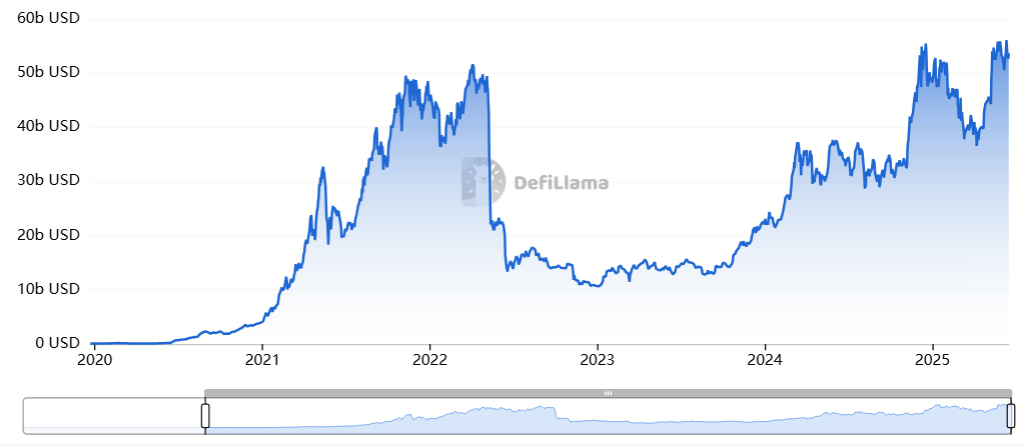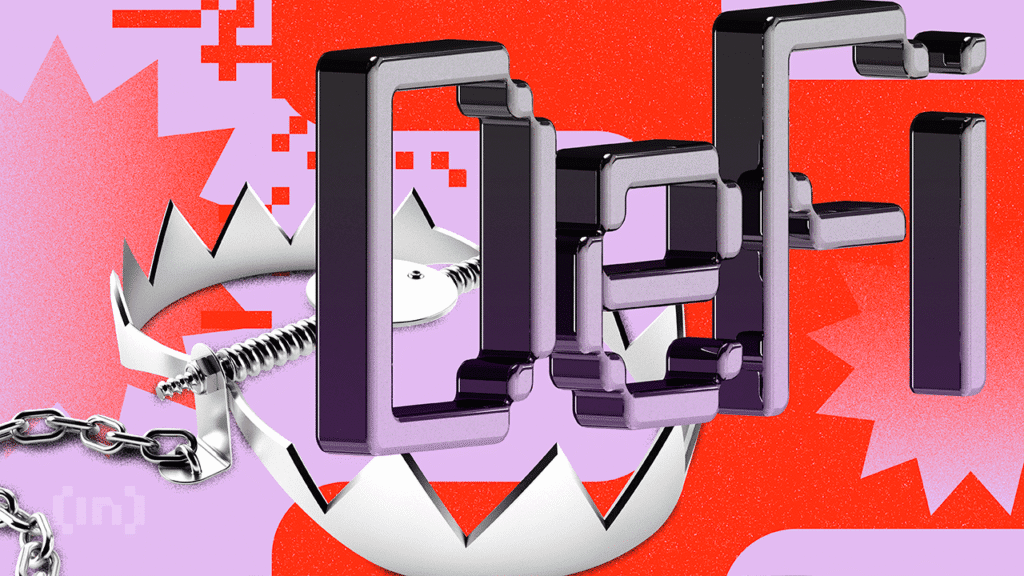Defi Lending has crossed several new milestones in June. While the majority of market attention concerns institutional investors who accumulate Bitcoin, capital continues to circulate regularly and quietly in loan protocols.
This trend creates opportunities for investors but also places growing responsibility for these protocols because they manage an increasing volume of funds.
Active loans reach a record level in June
According to Defilma data, in June, the total locked value (TVL) in loan protocols exceeded $ 55 billion, the highest level in DEFI history.
This figure includes all the assets locked on DEFI loan platforms. It covers the two assets deposited by lenders and guarantees provided by borrowers.

Although TVL decreased in the first three months of the year due to external concerns such as Tariff Wars, she quickly rebounded. The growing figures reflect the growing confidence of investors in investment performance thanks to loans.
In addition, data from the token terminal show that active loans reached $ 26.3 billion in June 2025. It is the highest value ever recorded in the history of the sector. It represents the total value of loans borrowed by users from DEFI loan protocols.

The rupture of active loans reveals that Aave dominates the market with $ 16.5 billion in active loans, or more than 60% of the total. Morpho ranks second with $ 2.2 billion, followed by Spark with $ 1.6 billion.
Although Aave’s domination shows strong confidence of users in the platform, this also means that any technical failure, security violation or legal action against Aave could trigger a domino effect.
The demand for booming loans leads to an increasing risk
The recent growth of high -performance stable stables has contributed to attracting more capital in loan protocols. Stablecoins like USDT, USDC and DAI are designed to maintain stable value. This reduces price volatility compared to cryptographic assets like ETH or BTC, making users more secure during the loan or borrowing of stablescoins.
Recently, Max Branzburg, head of consumer products in Coinbase, revealed that Coinbase users had borrowed $ 400 million in USDC at around 5% interest. This occurred in just a few months following the launch of the product.

A major concern is the risk of liquidation linked to loan / value ratios (LTV). The LTV ratio measures the value of a loan against the warranty.
For example, the current LTV of Coinbase is 0.48. However, if the value of the guarantees – typically cryptocurrencies – rises strongly, the LTV ratio can increase rapidly. If it exceeds the 86% threshold set by Coinbase, the warranty will be automatically sold to cover the loan, which could cause losses for the borrower.
In addition, in a bull market, investors often want to capitalize on the upward trend. They borrow funds from DEFI protocols to buy more cryptographic assets like Bitcoin and Ethereum. Many also use a leverage to increase their professions.
“The lever effect is a double -edged sword, a carefully Crypto Fam FAM,” said investor Lil G.
As confidence increases, the same goes for the lever. Any market drop of 10 to 20% could trigger a cascade effect. History shows that such powerful dips can still occur, especially during the moments of sensitive or unexpected news.
Non-liability clause
In membership of the Trust project guidelines, Beincrypto has embarked on transparent impartial reports. This press article aims to provide precise and timely information. However, readers are invited to check the facts independently and consult a professional before making decisions according to this content. Please note that our terms and conditions, our privacy policy and our non-responsibility clauses have been updated.

